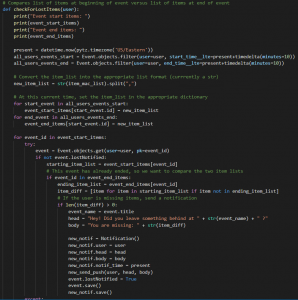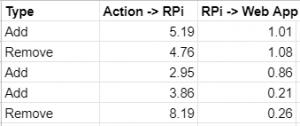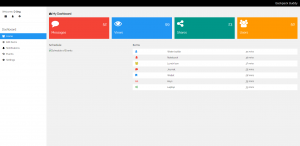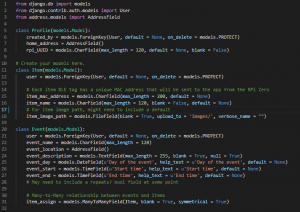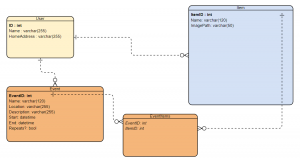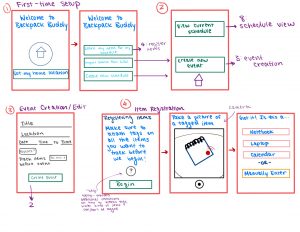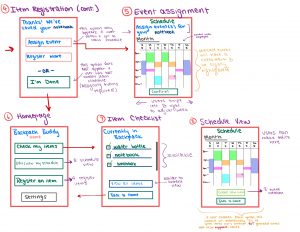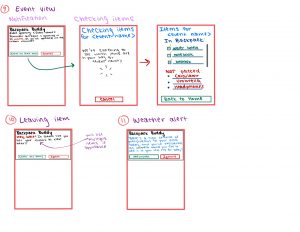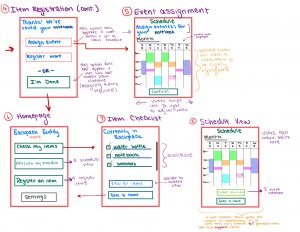This week, I completed writing and implementing the Schedule Learning feature for our web application. The schedule learning feature makes use of two new models: a TimeItemListPair and an ItemCounter.
Multiple TimeItemListPairs essentially function as a dictionary, with each pair tied to a user and a timestamp with a list of items currently inside the backpack at that specified timestamp. An ItemCounter exists for each item tied to a specific event (e.g. there could be multiple ItemCounters for the same item, “Folder,” if Folder is assigned to more than one event) and keeps track of how many times this item, for this event, has been found in a TimeItemListPair.
For the assignment logic, our system runs through all the events for a user that are marked as “Schedule Learning” events. If a TimeItemListPair exists such that its timestamp falls within the window of an event (i.e. between the start time and end time of an event), the counter for each item in that Pair will increment by one. Finally, assignment continuously happens, assigning items with counts higher than 85% of all counts to the corresponding event.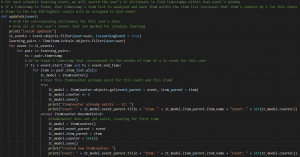
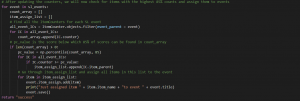
Although this feature is not completely fleshed out, schedule learning is not included as part of our MVP, and is simply meant to help decrease the user burden of manually assigning items to each event.
Additionally, I completed an extra feature to add a “Register” button to unnamed items inside a user’s backpack for streamlined registration. This feature can be viewed here.
This past week, I also worked with my teammates on the Final Presentation slides.
Our progress is currently on schedule.
In the next week, our remaining focus will be on completing deliverables for the end of this project course, including the final video, poster, and report.


